Tom Robinson shares epic tales from first leg of world record-breaking solo journey

Tom arrived on Tongareva/Penrhyn Island in the Cook Islands on 9 December 2022, 160 days after leaving the port of Callao in Lima in Peru.
The perils of his epic journey began long before Tom boarded his rowing boat Maiwar on 9 July last year. He faced bureaucratic barriers, unexpected costs from Peruvian border authorities and unscrupulous shipping agents as he attempted to bring his boat into the country. He was even robbed at knifepoint in downtown Lima. Despite those setbacks, he received lots of moral support and practical assistance from members of the Peruvian Yacht Club in Callao which acted as base camp while he prepared his boat for the long journey across the planet’s greatest expanse of open ocean.
Maiwar is a wooden clinker-built 7m-long rowing boat that Tom designed and constructed himself. Despite his young age, he’s a qualified, wooden boat builder and had already completed two coastal rowing expeditions along the Queensland coast while still at school.
From the age of 12 Tom lived in a house on the banks of the Brisbane River in Queensland where his father built him a little plywood boat for messing about in the river. Rowing became not just a hobby, but an obsession as Tom rowed to and from school each day and played around on the river in every spare moment. At age 14 he rowed 130km solo from Brisbane to the Gold Coast, spending five days living in a 13-foot dinghy that he and his father modified for the journey. It was around that time that Tom decided he was going to be the youngest person ever to row across the Pacific Ocean, an ambition he’s held tightly to for the past eight years.
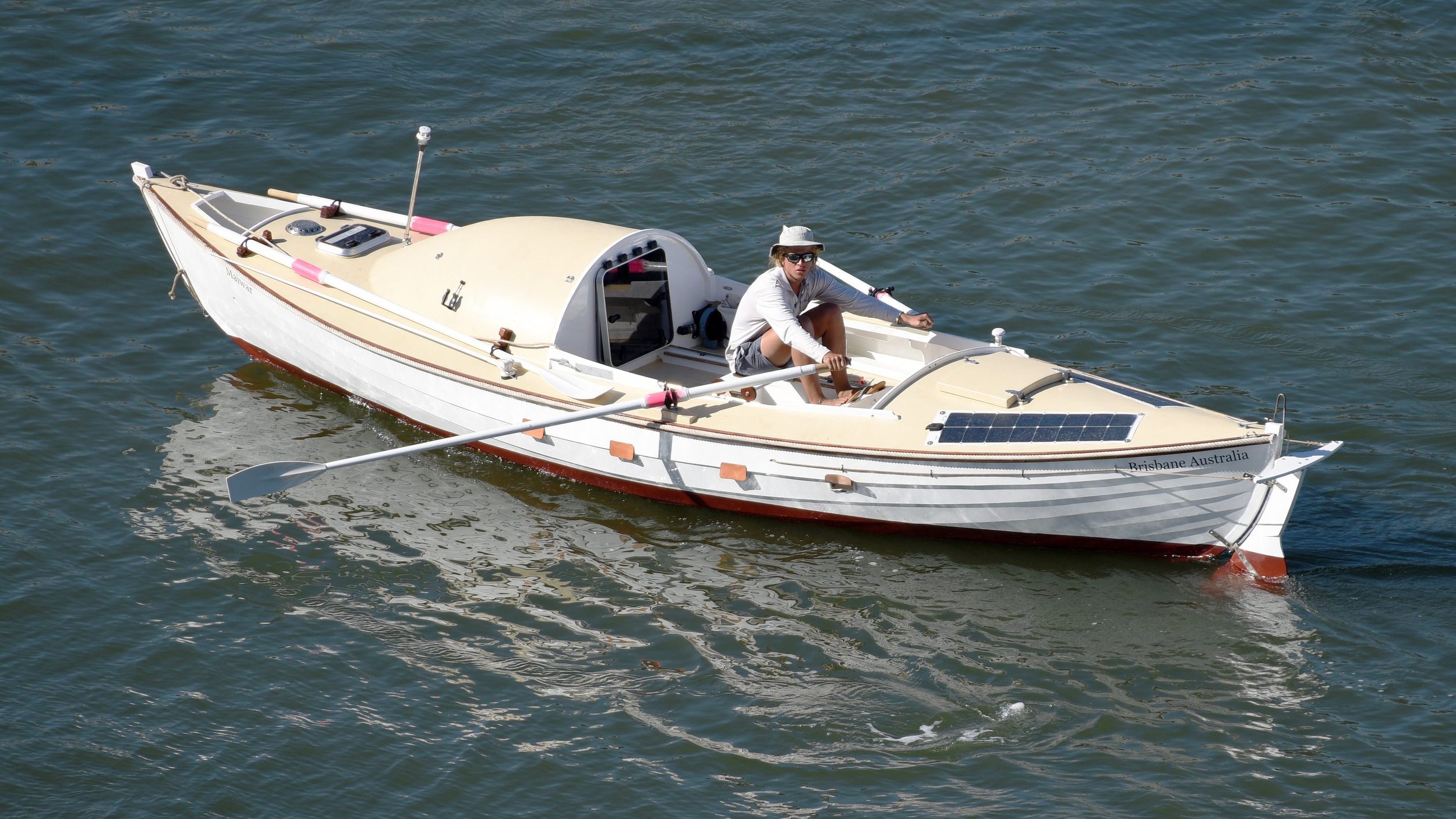
After completing his year 12 certificate he moved to Sydney aged seventeen to pursue a boatbuilding career. He spent the first year of his apprenticeship there, taking full advantage of the city’s world class sailing and boatbuilding heritage. Tom moved back to Brisbane to focus on wooden boat restoration. For the remaining three years of his apprenticeship, he worked full time restoring his own boats, competing in offshore yacht races and travelling overseas. He also became proficient in traditional celestial navigation.
During the years of the COVID-19 pandemic, while some of his sailing plans were scuppered, Tom set about building the craft that would take him across the Pacific. Why did he choose a wooden boat for such a potentially perilous undertaking?
“There are many reasons,” says Tom. “The biggest being that this is going to be my home for months on end, so it has to be nice, homely and comfortable. There was no way that I was going to spend six months in a plastic or carbon fibre ugly thing like that. And timber, as a material, is beautiful, it’s sustainable, it’s good for the planet. Especially the timber I used, which was Queensland-grown plantation hoop pine, so, it’s a more sustainable option. It feels better, it’s nicer, -in every respect, it’s just better. People may argue you need a carbon fibre boat because it’s lighter and therefore goes faster, but by the time you’ve got enough food and water for six months, the weight of the actual boat itself only makes up a small percentage of the overall weight. So, if I’d gone carbon fibre, maybe I would’ve saved five per cent, but what does that equate to out here? Maybe a few extra days at sea, so it’s not really the right way to think about it. And so, for me, wooden boats are the best.”
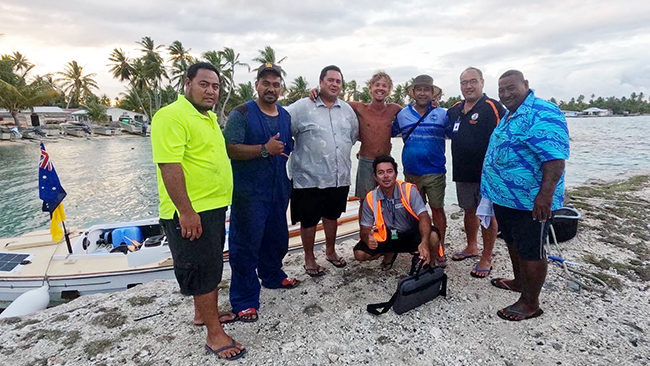
Tom’s boat Maiwar has proved herself more than worthy of the task so far. The first leg of Tom’s trans-Pacific rowing attempt came to a successful and safe conclusion when he arrived at idyllic Penryn Island in the northern Cook Island group just before Christmas. The first leg of the journey took longer than anticipated.
“I was at sea for 160 days. I originally planned to make landfall in The Marquesas, which is east of here, but I was blown off course. And so, almost overnight, the journey changed from what was going to be a 100-day first leg into what became a 160-day leg. Penrhyn Island where I am now was next after the Marquesas. And so, it turned into a big, long, arduous, painful, hard journey. But it was pretty spectacular too sometimes,” says Tom.
“I packed food for 150 days just in case, because I thought that there’s a very slim chance that this could happen, and it did. I caught a lot of fish too. I left South America with about 350 litres of water, and I also had a desalination pump that turns saltwater into fresh. I was rationing to two litres a day, which was really challenging. By the end of the journey, it was so hot that I just couldn’t manage on just two litres a day, so I had to pump for about half an hour each day to get more fresh water to drink.”
Tom encountered rough seas soon after leaving Peru. “I think on day five or six, it was pretty rough. At that point, the boat was heavy because there was five months’ worth of food aboard and so, she wasn’t really riding the waves as I would’ve liked. That was pretty scary. You wedge yourself inside the cabin and the boat’s rocking around and waves are crashing everywhere. Yeah, that’s pretty full on,” says Tom.
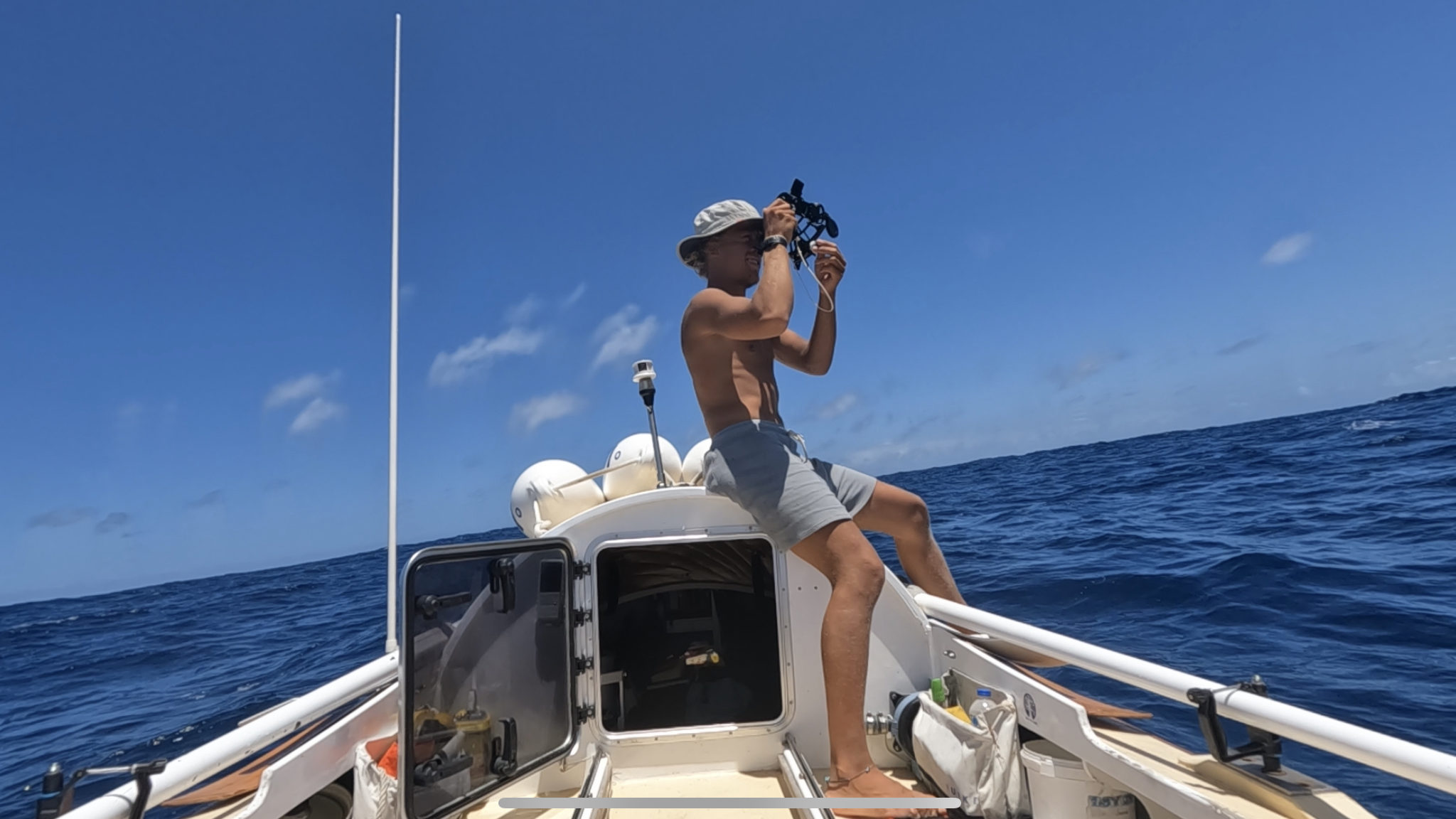
Around day 65, the wind was blowing around 25 knots, -nothing too unusual, when out of nowhere, Tom turned and saw a huge wave coming towards him. There was nothing he could do but let go of the oars and hold onto the side of the boat. “I just held on for dear life and this huge wave just broke over the boat. Thankfully, I managed to stay on board and the boat didn’t capsize, which was really lucky, it came close. It was really frightening because it came out of nowhere and it was very unexpected. So, I lost my nerve there for a little while though.”
Tom was able to stay in touch with home via his satellite phone and he occasionally encountered other vessels on the high seas including the jumbo squid fishing fleet off Ecuador.
“The most notable ships I saw were when I was south of the Galapagos Islands, -a few hundred miles south-, and I passed north of the squid fishing fleet. There are hundreds of squid fishing boats out there. And so, at night, the whole horizon was aglow. And it was really strange for me because I didn’t know what it was, this sort of huge, bright, massive light on the horizon.”
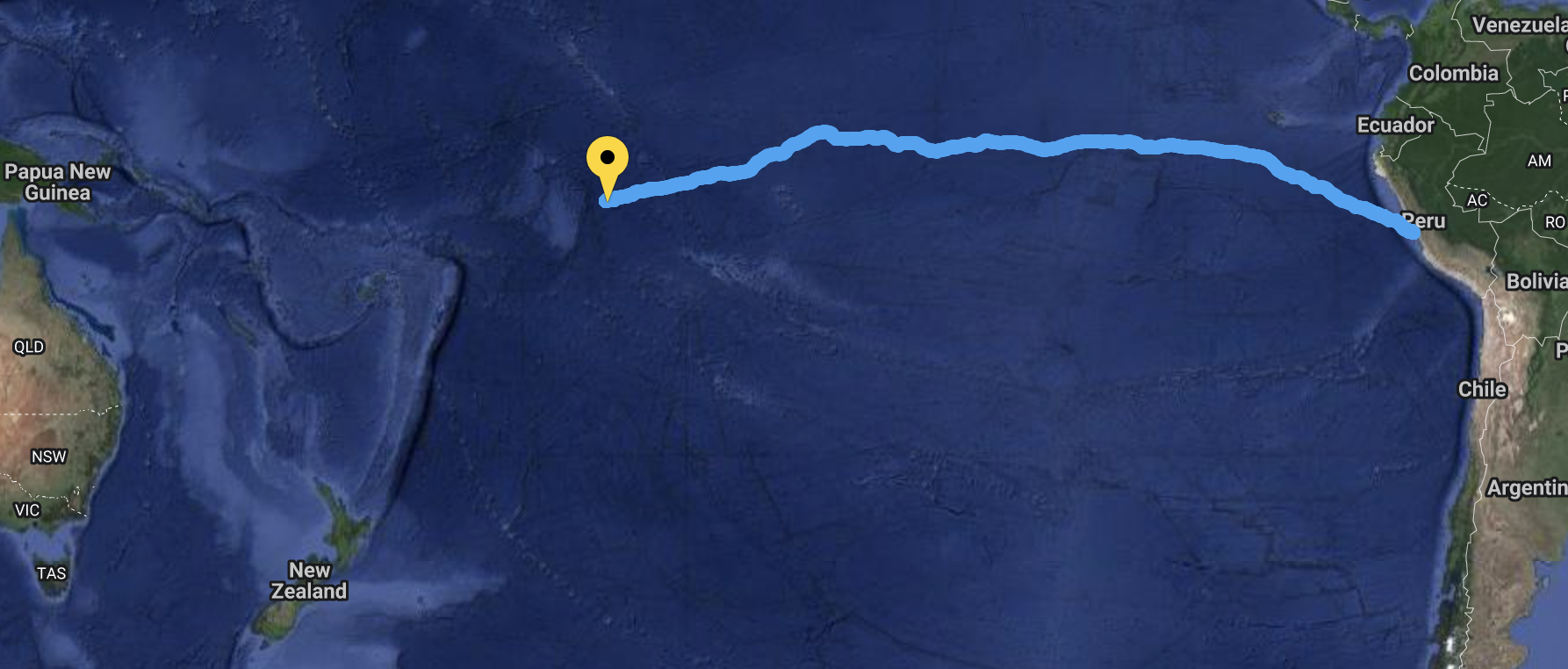
On day 49 a big tuna fishing ship spotted Tom. They lowered a speedboat and two Ecuadorian fishermen sped over to Maiwar, but they didn’t speak English and Tom’s Spanish wasn’t too good either. “But I rubbed my belly to say I was hungry, so they came back with all this food. There was tuna, but the rest of the food wasn’t great. I got strawberry jam, I got Powerade, I got cigarettes, I got all these things I didn’t need. That was really funny,” he says.
Apart from those rare human encounters, Tom was alone for five months. “I find solitude leads to real contentment. I don’t miss anything at home, or even civilisation itself. I find I’m completely at peace when I am alone at sea,” he says.
Tom has already completed arguably the most perilous sector of his grand adventure having completed a 5000 nautical mile non-stop traverse of the most remote stretch of the Pacific Ocean. The next stage will see him island hop through Oceania before making a final ocean crossing back to Australia in late 2023.
How does Tom see the next few months unfolding?
“I’m really at the mercy of the wind and the currents when I’m at sea so I’m never nearly exactly sure where I’m going to end up or which island I’m going to get to. But I do think that eventually I’ll end up back in Australia somewhere. And between here and Australia, there’s lots of islands. In the first half of the Pacific I just crossed, there’s nothing. But from here on in there’s heap of islands. And so, I’m hoping to stop, have fun, meet people and explore and experience new cultures. The first half was hard and the second half’s also going to be hard, but more interesting.”
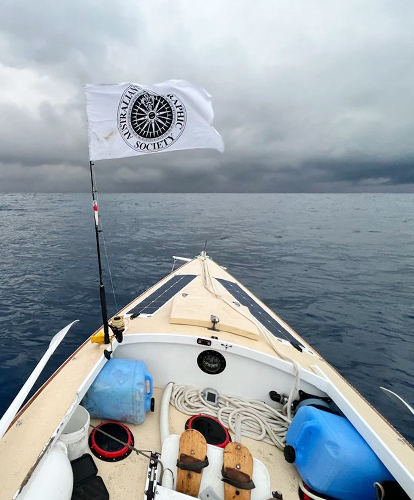
Quick stats and facts:
- Tom Robinson is 23 years old
- Distance Tom will row: 8000 nautical miles (14816 kilometres)
- He will become the youngest person to row across the Pacific Ocean
- The current record is held by Briton Sylvia Cook who did it with her partner John Fairfax in 1972 when she was 32 years old
- Only twelve people have rowed solo across the Pacific Ocean, only four have departed from South America
- His boat is called Maiwar, an Indigenous word for the Brisbane River where Tom spent his youth
- Maiwar is only 24 feet long (7.31 metres)
- Maiwar took five months to build
- Maiwar has a cabin with a single bunk, a galley and a navigation station
- Maiwar is self-righting, should she capsize
You can follow Tom’s adventure via his website and you can also help Tom achieve his ambitious goal with a cash donation through his GoFundMe portal also accessible from his website homepage.
The Australian Geographic Society is one of Tom’s sponsors and we will be following his progress during 2023 here on the website and in the magazine. Stay tuned.





